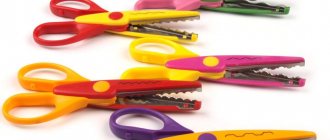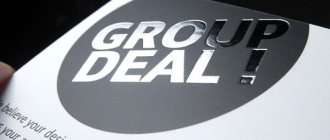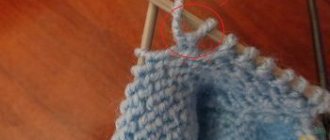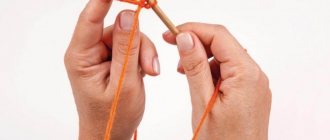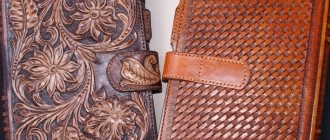+7 Call me back
[email protected] Calculate circulation
Home / Services / Foiling
Foiling is an alternative to traditional hot stamping process of applying foil to paper and cardboard. For foiling you need: a laser printer or copier to output a graphic image and no cliche is required! Specialized foil is baked only to the toner.
We are talking about creating an image with a metallic shine effect, which is formed by sintering printer toner powder with a special sheet of foil under high temperature. Thanks to this, text or a design appears that shimmers in gold/silver.
This service is in great demand when producing original business cards, as well as when the client wants to go beyond conventional printing when ordering greeting cards, advertising brochures or branded notebooks. With the help of the foil effect, finished products look more expensive and more attractive than products with a similar plot.
The technology is not intended for textured linen-type paper, since the toner in the recesses of the texture does not sinter with the foil. The disadvantage of laser foiling is that it is very difficult to achieve accurate color registration. A solution to the problem is to overlap one foil with another.
In this way you can make:
- business cards with foil,
- invitations with foil,
- diplomas with foil,
- foil-lined booklets,
- foiling calendars,
- foiling book covers,
- menu foiling,
- foiling packaging for goods,
- selective foiling and so on.
Materials for foiling
Let's take a closer look at foiling technology, taking into account the type of materials, manufacturing process, advantages and disadvantages of the service. We remind you that you can also get all the necessary advice from our managers via contact phone numbers.
Types of tone-sensitive foil
In our work, we use high-quality printing materials that allow us to produce unique printed products. A special feature of the technology under consideration is that when creating one plot, you can combine several different types of foil. In this case, only special types of metallized film are used, which have an appropriate adhesive layer for better adhesion to the surface of the paper and are not prone to subsequent diffusion shedding.
At the current time, the most in demand is foil:
- Matte.
- Glossy.
- Colored.
- Holographic.
The first two positions do not require much explanation, but the last ones are worth considering in more detail. Foil technology allows you to give the image not only a classic silver or golden shine, but also use other popular colors in the metallic style: black, red, blue, emerald. The holographic look of foil looks very interesting, the surface of which contains various abstract shapes and patterns. Under different lighting angles, such a finished image will magically change.
Paper TOUCHE COVER
Thanks to double-sided latex coating, the paper has a matte texture, looks both discreetly elegant and luxurious, and the silky, delicate, slightly cool surface feels like a rose petal. At the same time, it is resistant to abrasion and dirt.
Foil process
First of all, the design of the future printed product is made up, which is formed taking into account all the customer’s requirements. Then the drawing is printed on the specified media - paper can reach A3 size. Initially, the required base image is transferred using powder toner from a laser printer or copier.
The simplest case using foil of the same color provides for the following sequence of actions:
- The metallized film is placed on the base paper with the active side down.
- A document made of two layers of material (paper and foil) is inserted into a special apparatus.
- Starting the foiling process on a high-temperature laminator (the temperature and speed characteristics of the hot rollers are set in accordance with the operational parameters of the film used).
- After the device is finished operating and the backing is removed, you get an image with a metallic shine effect.
In other words, the foil particles carefully “stick” to all areas of the paper where there is a printed image, and the rest of the surface of the medium remains as is. The foiling process becomes more complex when you need to use several different types of foil to create a specific visual.
The main advantage of this technology is its affordable cost and simple printing process in any edition. But there are certain restrictions on the type of paper media. Foil cannot “stick” evenly and firmly to a textured or varnished surface, which should be taken into account when ordering such a service. If it is still necessary to obtain the effect of metallic shine on a relief material, then they turn to another method - the more expensive method of hot stamping.
Products with foil
A huge advantage of foiling is that it is not embossing and does not require cliches, and accordingly the cost of manufacturing printed products is reduced.
In addition, the advantages of the foiling process are the following factors:
- No traces of cliches on the reverse side of the product;
- Even single copies of printed products can be produced economically and quickly;
- Our printing house offers a huge selection of various designer papers and types of toner-sensitive foil;
- Foil laminating makes it possible to bring any of your design ideas to life.
Foiling of invitations, cards, certificates. Making wedding invitations, cards and certificates with foil.
Foil is often used when making wedding invitations, since such invitations look beautiful, but are not too expensive (unlike embossing) and any young couple can afford to make them in order to give their wedding invitations the most presentable and unique design, which will be appreciated by the guests.
Postcards with foil are also very popular among people who want to give their cards the most impressive appearance and unique design.
Certificates of completion of courses, trainings and any other training programs are also most often produced using foil. This method is distinguished by its reasonable price and high quality of the final result.
Foiling of certificates, diplomas, diplomas. Production of diplomas, diplomas, certificates with foil.
Foiling with toner-sensitive foil is the most widespread method of producing diplomas from any educational institution.
Our services include the production of diplomas for colleges, higher educational institutions, courses, schools and so on. Diplomas are produced according to all the rules: on special paper with a professionally selected color scheme. The production of certificates with foil, diplomas with foil, diplomas with foil will add additional luxury to the award and increase the value of this award.
Cost of foiling in our printing house
Our printing house carries out foiling of all types of printed products.
Depending on the circulation, our managers will calculate for you the most favorable cost of foiling. The price of production of a circulation depends on such indicators as:
- Type of paper;
- Product size;
- Type of print;
- Application of various technologies for working with paper, number of perforations;
- And much more.
Types of embossing
There are hot and cold stamping. In the hot version, a specially prepared stamp (cliché) is heated to the required temperature, and then pressed against the foil. The hot-melt layer melts, and as a result of the pressure of the foil stamping press, an imprint is left on the product. This method is quite widely used in mass production, although it is not suitable for thin films, which melt too quickly when exposed to high temperatures.
Material that meets the requirements of cold stamping must contain an adhesive base that is destroyed when exposed to ultraviolet radiation. The process itself will require the following equipment:
- foil unwinding mechanism
- a device that creates a pattern using UV varnish
- drying plant
This option is very helpful when the original image is rasterized and contains a large number of halftones.
Prices for foiling
In our company you can order truly stylish business cards that will look very advantageous and be easy to remember.
In addition to producing original information cards, we are ready to develop a unique design style for greeting printing and advertising printed materials. Foil technology significantly improves the visual component of the classic range of colors, which allows for better perception of the printed image by the viewer. Cost* for 1 sheet, rub.
>
| Number of sheets | Foil A4 in one color | A4 foiling in two colors |
| from 5 | 50 rub | 100 rub |
| from 50 | 40 rub | 70 rub |
| from 100 | 35 rub. | 80 rub |
| from 300 | 25 rub. | 50 rub |
Place an order for foiling
Cold stamping technology: a new way of finishing
Foil stamping is one of the most impressive finishing methods. However, it is very expensive, and is generally not applicable for heat-sensitive materials. Cold embossing with UV varnish is a good alternative. Modern label products now often acquire a characteristic feature: their printing execution is extremely complex. To produce high-quality, attractive labels, customers and performers go to the most intricate tricks. This includes the use of special designer papers, and multicolor printing in 6-8 colors using additional (Pantone) or special inks (fluorescent, pearlescent, heat-sensitive), and a combination of several printing methods, for example, flexography and rotary stencil. However, it is no longer enough to simply print a label; it is necessary to carry out a whole series of complex finishing operations, which are designed to provide it with the most attractive appearance. Very often they use a variety of varnishing, including selective varnishing, cutting along a complex contour, lamination and much more. Currently, foil stamping has become extremely popular in label production. The reason is the ability to give the label a beautiful appearance, which today plays a decisive role in the buyer’s choice of products. Foil imparts a characteristic metallic sheen that cannot be achieved using metallic printing inks. Even the use of metallized paper or film does not give the same effect that can be achieved with foil stamping, and in addition, when printing on metallized materials, a number of additional difficulties arise that also have to be taken into account. Nowadays, for the production of self-adhesive labels, narrow-web machines of various printing methods are mainly used, which provide the entire range of printing and finishing operations in one run. For hot foil stamping, special sections are installed on narrow-web machines. In this case, embossing is carried out using a heated engraved brass shaft with a special printing foil. This method of label finishing has proven itself well for the production of large volumes of products, however, its wider use is limited by a number of serious disadvantages:
the high cost of the hot stamping shaft, which is 1.5-3 thousand dollars, depending on the size and complexity of the design; long time for manufacturing and receiving the hot stamping shaft (as a rule, it is at least 1.5-2 weeks from the date of sending the application for production - most often abroad); the cost of purchasing the hot stamping section itself, which is not used very often, but is quite expensive, but cannot be used for anything other than stamping; When embossing thin and heat-sensitive materials, significant difficulties arise. Do not forget that very contradictory requirements are imposed on label products, since, on the one hand, a label is not an independently sold product - it is only an addition to the main product, and on the other hand, any product must be equipped with the most attractive label. Since label costs are direct costs for the product manufacturer, the customer wants to reduce them to a minimum. Naturally, with constant, repeating runs of hundreds of thousands of labels, the cost of a hot stamping roller becomes unnoticeable and has virtually no effect on the cost of one label. But what to do if the label circulation is only 150-200 thousand pieces per year? Or when you need to make a trial run of 10-15 thousand labels? In this case, the cost of the shaft will be higher than all other costs of the label combined. For such cases, we can recommend a method called . Cold stamping This technology involves applying the so-called cold stamping varnish, a specially developed adhesive, to the desired printed material. The varnish is applied using a conventional photopolymer form in a flexographic printing section, partially polymerized by UV rays, foil is applied to it, after which, already in a roll, the final polymerization of the varnish occurs within a few hours. For cold foil stamping, special sections with adjustable power of UV lamps or converted lamination sections can be used. Moreover, special cold stamping sections can be used like regular flexographic ones. Cold foil stamping has several advantages: this technology, unlike hot stamping, does not require separate equipment; no need for engraved brass cylinder; small runs are economically beneficial; alignment deviations are easy to control. The cold foil stamping process uses conventional photopolymer flexographic printing plates, which makes it more economical than hot foil stamping. In addition, temperature-sensitive materials can be processed without problems using cold foil stamping. However, the quality of the surface of the material matters - it must be sufficiently smooth. For this reason, this technology is only applicable for embossing on film materials (polyethylene, polypropylene, etc.) or high-gloss coated paper. The cold stamping process quickly and efficiently produces high-quality decorations at optimal speed. Hot stamping uses expensive brass dies that go through a heating cycle, which slows down the process. In addition, the heavy brass roller, heated to a temperature of about 120-160°C (depending on the properties of the foil and the embossing speed), cools down for 2-3 hours after the end of the print run before it can be removed, which sometimes makes it difficult to prepare for the next circulation, while the section used for cold stamping is washed off in the usual manner for a few minutes.
As a rule, the device is installed before the last printing sections or between any two flexographic sections.
In the printing section used for cold stamping, the subject is applied to the canvas as a partial varnish layer. In cold foil stamping, a special UV varnish with both cationic and radical curing can be used. The pressure in the contact zone is adjusted in such a way that the foil is pressed onto the varnish layer (the material and foil are pressed between two cylinders). For high-quality embossing, a pressure of 10-15 kg per square inch is recommended. Best results are obtained by using a hard rubber bead (85° Shore A or higher) and a steel counter-pressure bead. Then the excess foil along with the backing is removed using a delaminating device. Currently, there are a variety of embossing foils available (gold, silver, other metallic colors, including multi-colored and holographic), produced by several companies. Metallized foil for cold stamping consists of the following layers:
lavsan film with a thickness of 10-25 microns;
special separation layer (0.1-0.5 microns); varnish painted layer (1-3 microns); a layer of vacuum-sprayed aluminum (about 0.05 microns); adhesion (ground) layer. Due to the easy separation of layers, the foil is well transferred to the printed material at high embossing speed. The results of embossing depend on the characteristics of the printing and laminating device of the printing machine, as well as on the properties of the varnish that was used. Complete fixation of the foil during cold stamping occurs after 1-2 days. The foil applied in this way can be varnished or laminated with film. The amount of varnish applied should be in the range from 3 to 7 g/m2, depending on the smoothness of the surface of the material being printed. The smaller it is, the more varnish needs to be applied. When printing on film, the best results are obtained when using an anilox roll with a lineature of about 140 lines/cm and a theoretical volume of 7-8 cm3/m2. It is possible to use a roller with a higher line size, but in this case complications are possible, especially when printing large dies, due to the insufficient thickness of the varnish layer. When printing over paint, it is recommended to use a heavy anilox roll with a lineature of about 100 lines/cm and a theoretical volume of at least 12-13 cm3/m2. Unlike paints, varnish is soft and sticky, so it must not come into contact with the rollers. To achieve this, the drying sections must be located at the same height as the printing section. After this, the material must immediately enter the foil pressing section. UV curing requires the use of medium to high voltage lamps of approximately 120 W/in. This power is effective at normal operating speed. It is necessary that the power of the lamps can be adjusted to select optimal parameters and obtain high-quality embossing. It is recommended to place the UV lamp at a distance of 0.4-0.65 m from the embossing device. The higher the operating speed, the greater the distance should be. The normal operating speed for printing and applying foil is 45-70 m/min. However, under such conditions, the embossing process is difficult to control and defects may occur. Therefore, working at such speeds is only possible with appropriate experience in cold stamping. It must be remembered that if the speed is too low, the varnish may be overexposed and its tack will not be enough to ensure high-quality transfer of the foil layers to the surface of the printed material. If the speed is too high, the varnish does not have time to polymerize and achieve optimal stickiness. In addition, too little time passes before the foil is separated from the substrate. It is desirable that after the initial pressing, the foil moves along with the sealed material smoothly for some time under controlled pressure and tension (for better adhesion). Errors and defects that occur during cold stamping are explained by a violation of the technology or incorrectly selected modes. Low quality cold stamping varnish directly affects the transfer of foil to the surface of the material. Varnish may become ineffective due to high absorption on porous materials. Cationic curing is retarded by chemically incompatible substances contained in the coating or paints of the material (carbonates and amines). In practice, better results are obtained if the surface of the material is sealed with an appropriate primer before printing the varnish. When using varnish with a cationic polymerization mechanism, you may encounter the following problems:
at relative humidity above 70%, the polymerization rate decreases. In this case, it is necessary to reduce the operating speed of the machine or increase the power of the lamps; the use of water-based paint or varnish may adversely affect the polymerization process due to increased moisture content. Therefore, cationic curing UV varnish cannot be used for cold embossing labels printed with water-soluble inks; Free radical paint must be completely dry before varnish is applied. Author: FlexoPlus Magazine



